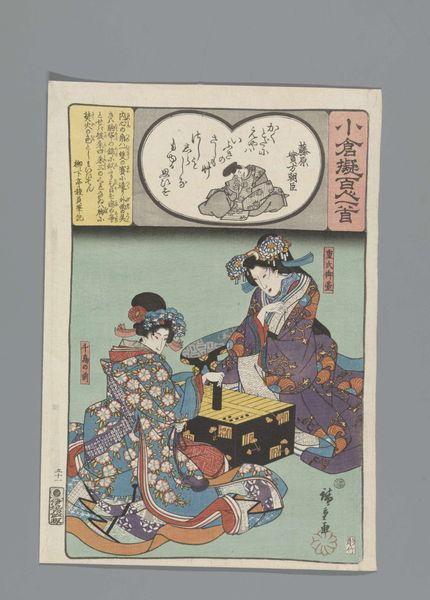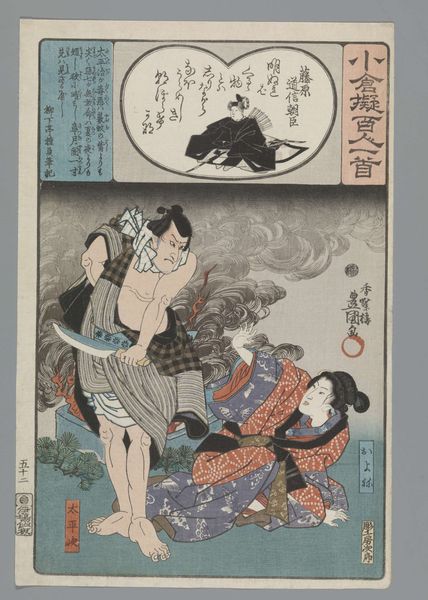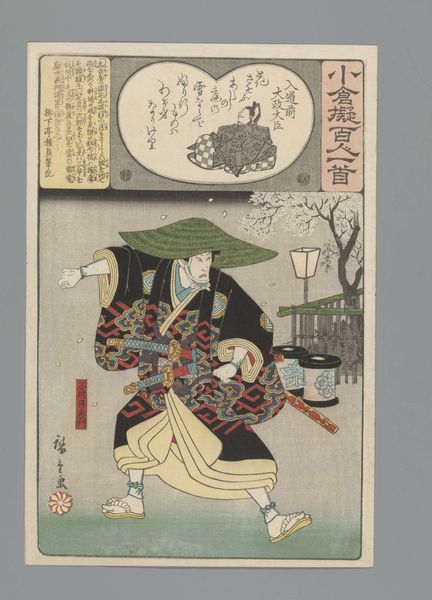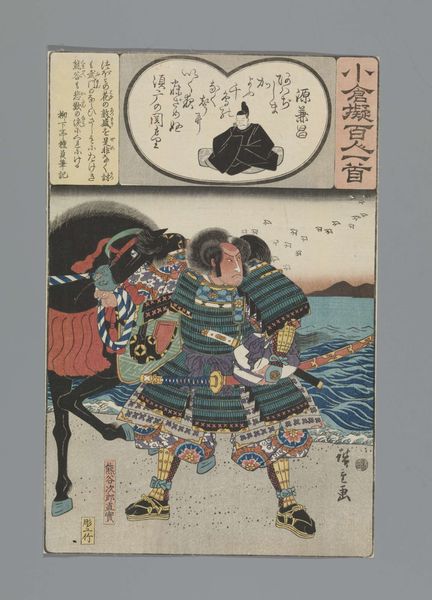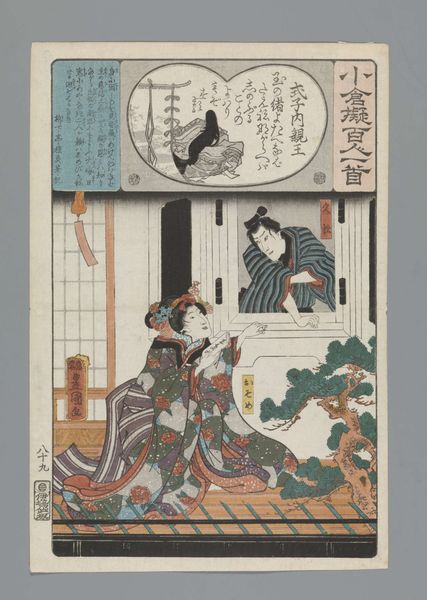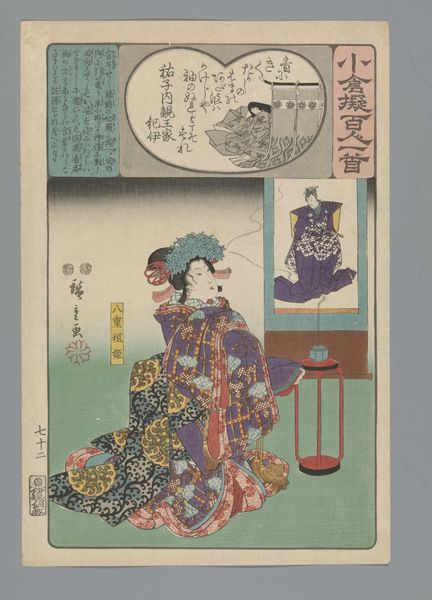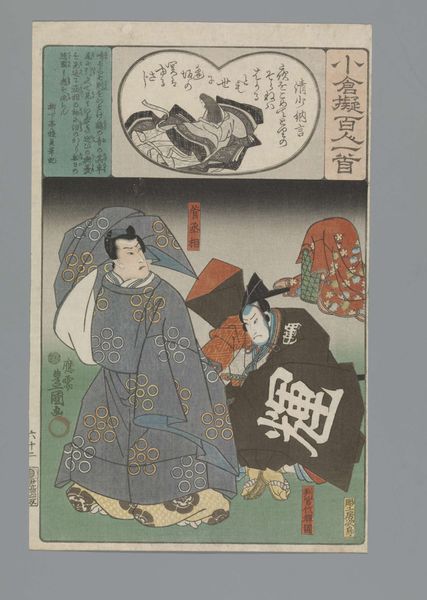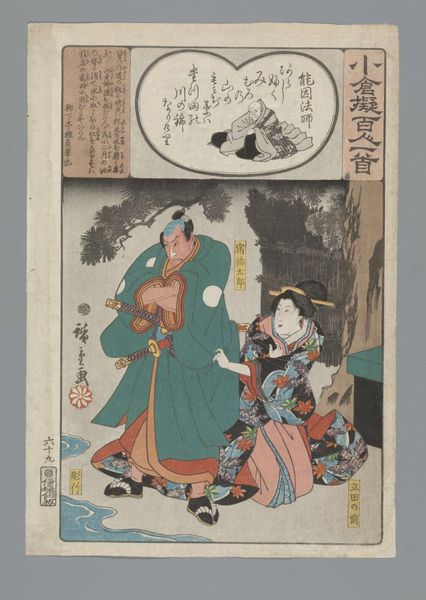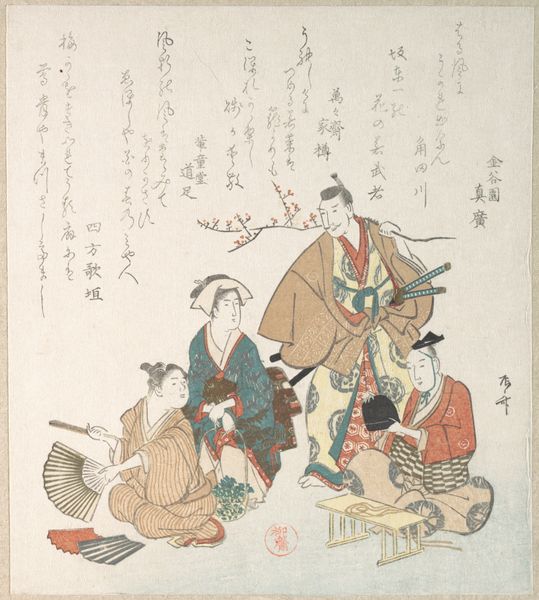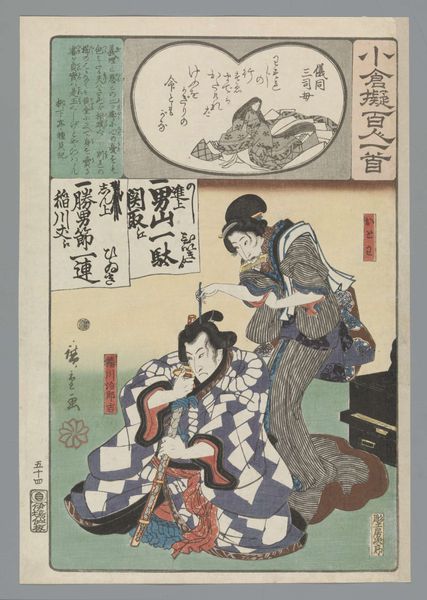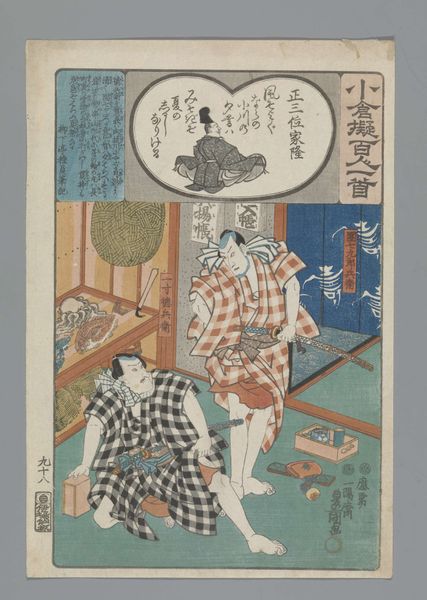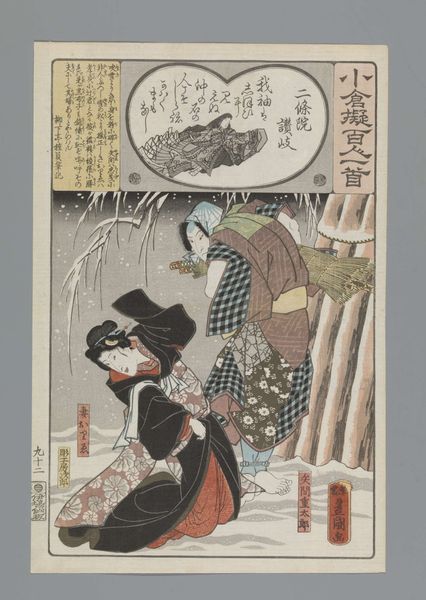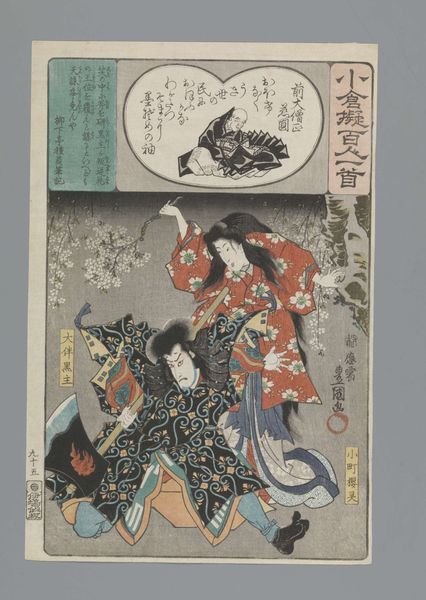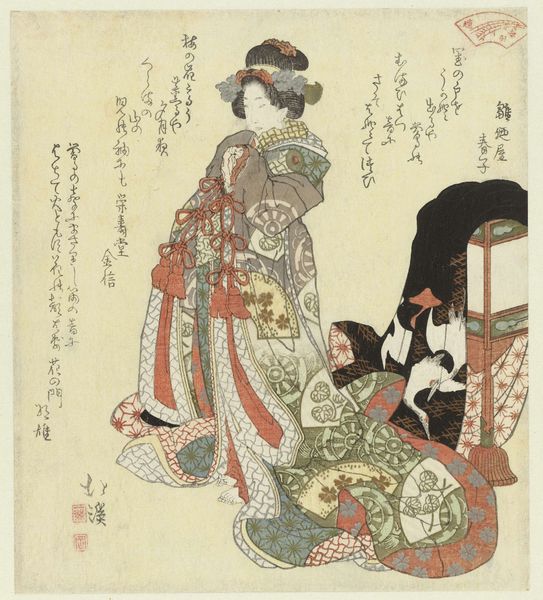
print, woodblock-print
#
portrait
#
narrative-art
# print
#
asian-art
#
landscape
#
ukiyo-e
#
figuration
#
woodblock-print
Dimensions: height mm, width mm
Copyright: Rijks Museum: Open Domain
Curator: Take a look at "Ogura Imitation of the One Hundred Poems," a striking woodblock print crafted by Utagawa Kunisada in 1846. Editor: Immediately, I'm struck by the sheer dynamism—the composition vibrates with a kind of brutal energy. Look at the contrasting geometry of the bamboo background against the swirling robes. Curator: Indeed. Kunisada produced this work within the larger cultural phenomenon of depicting scenes inspired by classical Japanese poetry, specifically, the Ogura Hyakunin Isshu. What we observe here is not simply a picture; rather it's part of a complex socio-cultural narrative where art legitimized authority, translating aristocratic traditions for a broader audience. Editor: Right. And what Kunisada presents to the viewer, here, is a carefully arranged palette dominated by earth tones set off by crisp linear contours, a perfect interplay between figure and plane. Even the textual cartouche at the top adds depth by mirroring the visual dynamic below. Curator: The inclusion of text alludes to the importance of literacy and classical knowledge in the social hierarchies of the period. Kunisada's skillful portrayal also provides valuable insights into Kabuki theater and popular culture in general during the 19th century. Notice the exaggerated expressions of the actors in mid-performance, clearly indicating it is based on a popular play of that period. Editor: Note, too, the rhythmic arrangement of forms. The diagonal of the sword mirrored in the subject's contorted limb—a carefully calculated strategy heightening the visual drama, creating an inescapable, almost cinematic effect long before the advent of film. Curator: Consider how such prints played a crucial role in disseminating visual narratives. These were not mere decorations but key agents in constructing collective cultural understanding of history and social values, contributing significantly to national identity building and power structures during the Edo period. Editor: Agreed. By so deliberately controlling the use of line and form and integrating all this to play upon culturally derived cues and expectations, Kunisada achieves far more than mere representation; this work constitutes an event—it enacts and even dictates response. Curator: Looking at the cultural implications in Kunisada’s oeuvre always fascinates me, particularly his impact on the dissemination of visual knowledge within a rapidly modernizing society. Editor: Yes, indeed, he masterfully used visual forms not merely to represent but to shape, to intensify experience and response itself.
Comments
No comments
Be the first to comment and join the conversation on the ultimate creative platform.
